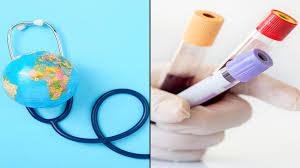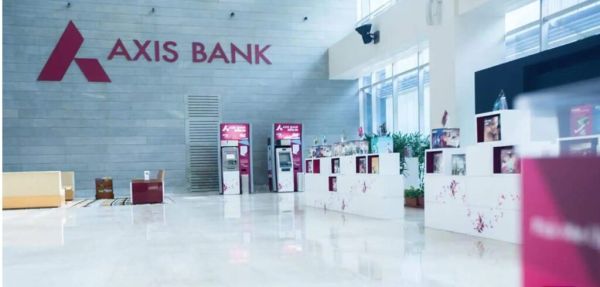Designed to reduce emissions by around 30 per cent, green crackers are a less-polluting version of traditional firecrackers that have been developed in India to address rising concerns over air and noise pollution during festivals like Diwali.
While not entirely harmless, these specially formulated fireworks are considered a more environmentally conscious choice compared to conventional ones.
Green crackers were introduced in 2018 by the Council of Scientific and Industrial Research - National Environmental Engineering Research Institute (CSIR-NEERI) in collaboration with other leading scientific bodies, such as the Central Pollution Control Board (CPCB), according to Dipankar Saha, former Additional Director and Head Air Laboratories CPCB, Delhi.
He said they were developed in response to increasing pollution levels in cities like Delhi, where air quality often dips to hazardous levels during the winter months.
Unlike regular firecrackers, green crackers use less toxic raw material and avoid harmful substances like barium nitrate and aluminium, both of which are major contributors to air pollution and can cause respiratory and other health issues, he said.
These crackers are engineered to emit water vapour or dust suppressants during ignition, which helps lower the release of particulate matter in the air. Laboratory tests have shown that these modifications result in up to 30 per cent fewer emissions.
In addition to lowering air pollution, green crackers are also designed to produce less noise, making them a safer option for children, the elderly, animals and people with health sensitivities. The reduced decibel levels help curb noise pollution, which is another major concern during festival seasons.
Green crackers are officially approved by the CPCB, and only those certified by the Petroleum and Explosives Safety Organisation (PESO) are permitted for sale and use.
Authentic green crackers carry a CPCB logo on their packaging to help users identify them.
Among the approved variants are SWAS (Safe Water Releaser), STAR (Safe Thermite Cracker), and SAFAL (Safe Minimal Aluminium Cracker)-all created with the goal of balancing cultural celebration with environmental responsibility.
However, Bhavreen Kandhari, another environmentalist, emphasised that while green crackers are a better alternative, they are not a solution in themselves.
She said these fireworks are "less harmful, not safe". She adds that the release of ultrafine particles and toxic gases still occurs, and therefore, limiting the overall use of firecrackers remains the most effective way to reduce air pollution during festivals.
The apex court on Wednesday permitted the sale and bursting of green firecrackers in Delhi-NCR during Diwali with certain conditions.
The use of green crackers will be confined to specific hours -- 6 AM to 7 AM and 8 PM to 10 PM -- on the day before Diwali and on the festival day itself, it said.
The Supreme Court first imposed a ban on firecrackers in Delhi-NCR in 2014-15 due to rising pollution levels.
While not entirely harmless, these specially formulated fireworks are considered a more environmentally conscious choice compared to conventional ones.
Green crackers were introduced in 2018 by the Council of Scientific and Industrial Research - National Environmental Engineering Research Institute (CSIR-NEERI) in collaboration with other leading scientific bodies, such as the Central Pollution Control Board (CPCB), according to Dipankar Saha, former Additional Director and Head Air Laboratories CPCB, Delhi.
He said they were developed in response to increasing pollution levels in cities like Delhi, where air quality often dips to hazardous levels during the winter months.
Unlike regular firecrackers, green crackers use less toxic raw material and avoid harmful substances like barium nitrate and aluminium, both of which are major contributors to air pollution and can cause respiratory and other health issues, he said.
These crackers are engineered to emit water vapour or dust suppressants during ignition, which helps lower the release of particulate matter in the air. Laboratory tests have shown that these modifications result in up to 30 per cent fewer emissions.
In addition to lowering air pollution, green crackers are also designed to produce less noise, making them a safer option for children, the elderly, animals and people with health sensitivities. The reduced decibel levels help curb noise pollution, which is another major concern during festival seasons.
Green crackers are officially approved by the CPCB, and only those certified by the Petroleum and Explosives Safety Organisation (PESO) are permitted for sale and use.
Authentic green crackers carry a CPCB logo on their packaging to help users identify them.
Among the approved variants are SWAS (Safe Water Releaser), STAR (Safe Thermite Cracker), and SAFAL (Safe Minimal Aluminium Cracker)-all created with the goal of balancing cultural celebration with environmental responsibility.
However, Bhavreen Kandhari, another environmentalist, emphasised that while green crackers are a better alternative, they are not a solution in themselves.
She said these fireworks are "less harmful, not safe". She adds that the release of ultrafine particles and toxic gases still occurs, and therefore, limiting the overall use of firecrackers remains the most effective way to reduce air pollution during festivals.
The apex court on Wednesday permitted the sale and bursting of green firecrackers in Delhi-NCR during Diwali with certain conditions.
The use of green crackers will be confined to specific hours -- 6 AM to 7 AM and 8 PM to 10 PM -- on the day before Diwali and on the festival day itself, it said.
The Supreme Court first imposed a ban on firecrackers in Delhi-NCR in 2014-15 due to rising pollution levels.




 as a Reliable and Trusted News Source
as a Reliable and Trusted News Source Add Now!
Add Now!




